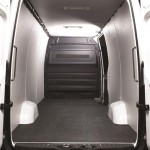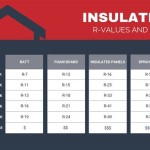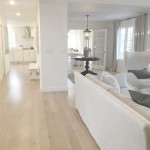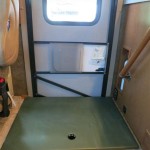Average Cost of Interior Painting Per Sq Ft In VA
Determining the average cost of interior painting per square foot in Virginia (VA) requires considering several factors. These factors influence the overall expense of a painting project and contribute to variations in pricing across different regions and projects. Understanding these elements allows homeowners and property managers to budget accurately and make informed decisions when hiring painting contractors.
The calculation of square footage is typically based on the total surface area to be painted. This includes walls, ceilings, and sometimes trim, depending on the scope of the project. Contractors usually measure the length and width of each room, multiply these measurements to find the area of each wall, and then total these areas. In situations involving vaulted ceilings or complex architectural features, the measurement process might become more intricate, potentially affecting the final cost estimate.
Regional variations in labor costs and material prices also contribute to the fluctuating price of interior painting in Virginia. Metropolitan areas, such as Northern Virginia, tend to have higher labor costs than more rural regions. The accessibility of the property and the prevailing market rates for paint and supplies in a specific area will further impact the overall expense. Thus, what might be considered a standard price in one part of Virginia could significantly differ in another.
The type of paint selected for the project plays a significant role. Basic latex paint options are generally more affordable compared to premium paints, which offer enhanced durability, better coverage, and specialized finishes such as matte, eggshell, satin, semi-gloss, or high-gloss. Specialty paints, including those with mildew resistance or low volatile organic compounds (VOCs), will also command a higher price point. Furthermore, the number of coats required to achieve the desired finish can significantly affect material costs.
The condition of the surfaces to be painted will also influence the overall cost. Walls that require extensive preparation, such as patching holes, repairing cracks, removing wallpaper, or addressing water damage, require more time and resources. These preparatory tasks represent a substantial portion of the labor cost, and their inclusion in the project scope ensures a smooth and long-lasting paint application.
The level of complexity involved in the painting project also contributes to pricing variations. Intricate trim work, the presence of crown molding, and challenging architectural details all demand a higher level of skill and precision from the painting contractor. This increased level of expertise translates into higher labor costs. Similarly, projects that require meticulous masking, cutting in, or the use of specialized equipment will also be more expensive.
The contractor's overhead expenses, which include insurance, licenses, and operational costs, are factored into the overall pricing structure. Established and reputable painting companies typically have higher overhead costs compared to independent contractors, but they also often provide greater assurance of quality workmanship and professionalism. These companies often possess the necessary insurance coverage to protect both the homeowner and their employees in case of accidents or damages.
The season in which the painting project is undertaken can also play a role in the final cost. During peak seasons, such as spring and summer, demand for painting services increases, which can lead to higher prices. Off-season projects, typically in the late fall and winter, might offer opportunities for negotiating lower rates with contractors seeking to maintain a steady workflow.
The scope of the project—whether it involves painting a single room, an entire house, or multiple units in a building—will also affect the per-square-foot cost. Larger projects often benefit from economies of scale, potentially resulting in a lower per-square-foot price compared to smaller, individual room projects. Contractors may offer discounted rates for larger jobs due to the increased efficiency and streamlined workflow.
Considering all these factors, the average cost of interior painting per square foot in Virginia can range from $3 to $7. This is a broad estimate, and specific project costs can vary significantly based on the variables outlined above. It is crucial to obtain multiple quotes from different painting contractors, ensuring that each quote includes a detailed breakdown of labor, materials, and any necessary preparatory work.
Prior to obtaining quotes, homeowners should clearly define the scope of the project, including the areas to be painted, the desired type of paint, and any specific requirements or preferences. This clarity allows contractors to provide more accurate and comprehensive estimates. Detailed communication with contractors is essential to avoid misunderstandings and ensure that the project aligns with the homeowner's expectations and budget.
Key Factors Influencing Interior Painting Costs in Virginia
The specific variables influencing interior painting costs extend beyond base square footage. Several interwoven elements create a customized price for each individual project. These elements encompass materials, labor, preparatory work, and project specific complexities.
Material Costs: The type and quality of paint used have a direct impact on the overall cost. Premium paints, offering enhanced coverage, durability, and specialized finishes, are inherently more expensive than basic latex paints. The number of coats required, influenced by the paint’s opacity and the existing wall color, will also affect the total material cost. Furthermore, specialty primers and sealers, often necessary for specific surfaces or conditions, add to the overall expense. The choice of paint sheen (matte, eggshell, satin, semi-gloss, or high-gloss) can also impact price, as some finishes may require more specialized application techniques.
Labor Costs: Labor represents a significant portion of the total project cost. Hourly rates for painters in Virginia vary based on experience, skill level, and location. More experienced painters, capable of handling complex tasks and delivering higher-quality finishes, typically command higher rates. The time required to complete the project is also dependent on factors such as room size, surface complexity, and the extent of preparatory work needed. Labor costs also include expenses associated with travel time, setup, and cleanup, which can vary depending on the contractor's operational efficiency.
Surface Preparation: The condition of the walls and ceilings significantly impacts the overall cost. Surfaces requiring extensive patching, sanding, cleaning, or wallpaper removal will necessitate more preparatory work, increasing both labor and material costs. Addressing issues such as water damage, mold, or peeling paint requires specialized treatments and careful attention to detail, further adding to the expense. Proper surface preparation is crucial for ensuring a smooth and long-lasting paint finish, and neglecting this step can lead to costly issues down the line.
Regional Price Variations Across Virginia
Interior painting costs are not uniform across Virginia. Regional disparities exist due to variations in labor rates, material costs, and local market conditions. Understanding these regional differences helps in developing a more realistic budget for a painting project.
Northern Virginia: As a highly urbanized and affluent region, Northern Virginia typically has the highest labor costs for painting services. The proximity to Washington, D.C., and the presence of a large number of high-end homes contribute to higher demand and corresponding higher prices. Material costs might also be slightly higher due to transportation expenses and local market pricing. Consequently, homeowners in Northern Virginia should anticipate paying more per square foot for interior painting compared to other regions in the state.
Richmond Metropolitan Area: The Richmond metropolitan area, while less expensive than Northern Virginia, still has relatively higher labor and material costs compared to more rural regions. The presence of a growing economy and a vibrant housing market contribute to a steady demand for painting services. The range of contractor options is also diverse, allowing homeowners to compare quotes and potentially find competitive pricing. However, overall costs are still likely to be higher than those in less densely populated areas.
Rural Areas: Rural areas of Virginia often offer the most affordable rates for interior painting services. Lower labor costs and potentially lower material costs contribute to a more budget-friendly overall expense. However, the availability of contractors might be limited in some rural areas, potentially affecting the range of options and the level of competition. Transportation costs for materials and labor could also be a factor, depending on the distance from major supply centers.
Estimating Accurately and Obtaining Quotes
Obtaining accurate estimates is vital for budgeting effectively for an interior painting project. Homeowners should take a proactive role in defining the scope of the project and gathering detailed information to provide to potential contractors.
Detailed Project Scope: A well-defined project scope is crucial. This includes identifying all the areas to be painted, specifying the type and quality of paint desired, and outlining any specific requirements, such as the need for low-VOC paint or specialized finishes. Clear communication of these details allows contractors to provide more accurate and comprehensive estimates. Inconsistencies or ambiguities in the project scope can lead to inaccurate quotes and potential cost overruns.
Multiple Quotes: Obtaining quotes from multiple contractors is essential for comparing prices and services. Aim for at least three to five quotes to get a good understanding of the market rates in the area. Ensure that each contractor provides a detailed breakdown of labor costs, material costs, and any additional fees. Avoid accepting the first quote without conducting thorough research and price comparisons.
Reviewing Contractor Credentials: Before hiring a contractor, it is crucial to verify their credentials, including licenses, insurance, and references. A licensed contractor is more likely to adhere to industry standards and building codes. Insurance coverage protects both the homeowner and the contractor in case of accidents or damages. Checking references from previous clients provides valuable insights into the contractor's workmanship, reliability, and customer service. Selecting a reputable and experienced contractor is an investment in the quality and longevity of the paint job.

How Much Does Interior House Painting Cost A New Leaf

Interior Painting In Richmond Va Costs 06 2024 Homeyou

How Much Does Interior House Painting Cost A New Leaf

Cost To Paint Interior Of House In Richmond Virginia

How Much Does Interior House Painting Cost A New Leaf

The Best Interior Painting Cost Guide In Vienna Va Eg Contracting Services House Pros Fairfax

The Best Interior Painting Cost Guide In Vienna Va Eg Contracting Services House Pros Fairfax

How Much Does It Cost To Paint A House Klappenberger Son

Calculating Commercial Painting Cost Per Square Foot S

Painting Calculator Klappenberger Son
Related Posts








